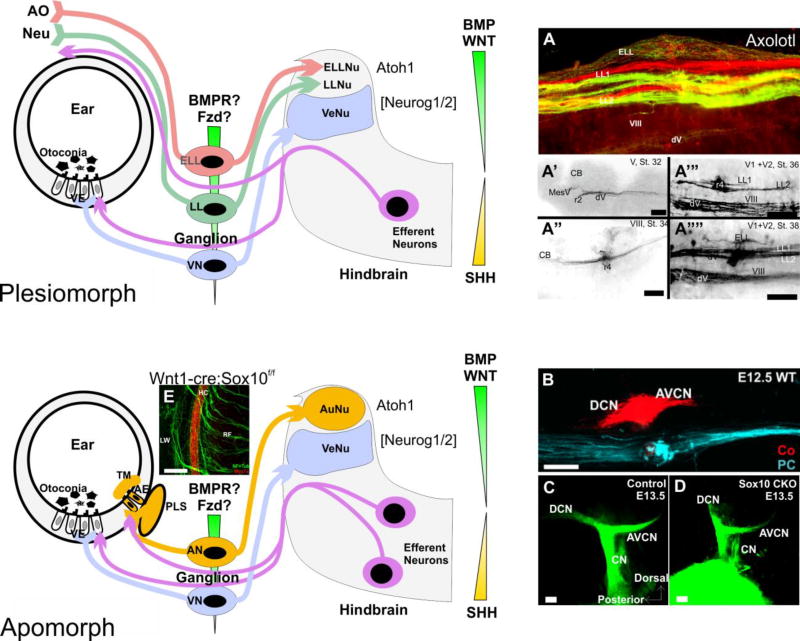Figure 5. Scheme of differences in vestibular, auditory, mechanoreception, and electroreception organ projections in the hindbrain as revealed by tracing experiments.
The various peripheral sensory organs [vestibular (VN), auditory (AN), mechanosensory lateral line (LL), or electrosensory ampullary organs (ELL)] each have unique central projections that terminate in distinct, non-overlapping regions in the hindbrain. The transition from aquatic, anamniotic vertebrates to terrestrial amniotic vertebrates was accompanied by the loss of all lateral line organs and the gain of auditory sound pressure receivers projecting via newly evolved auditory sensory neurons of the ear (AN) to apparently new auditory nuclei. In addition, efferent cells lose connections to mechanosensory lateral line and evolve new connections of a segregated population to auditory epithelia. Formation of central nuclei is mediated in part by bHLH transcription factors that also are important in ear neurosensory development (Atoh1, Neurog1) and their expression is specified by the dorso-ventral patterning morphogen gradients in the hindbrain (BMPs, Wnts and Shh). Afferent projection of different ganglia related to lateral line organs or other sensory modalities (A) develop progressively over time (A’, A”, A’”, A””). Likewise, different inner ear organs (B) project directly to their distinct target nuclei, possibly guided by morphogen gradients (indicated as colored wedges representing ligands in the brain and receptors in the ganglia). Elimination of Schwann cells through conditional deletion of Sox10 does not alter central projections (C,D) but partially disables afferents from finding the organ of Corti (E). Tectorial membrane, TM; auditory epithelia, AE; vestibular epithelia, AN, auditory neurons; VE, vestibular epithelia; VN, vestibular neurons; PLS, perilymphatic space. Modified after (Fritzsch et al., 2005a; Fritzsch et al., 2015b; Fritzsch et al., 2006b; Mao et al., 2014; Sienknecht et al., 2014).

